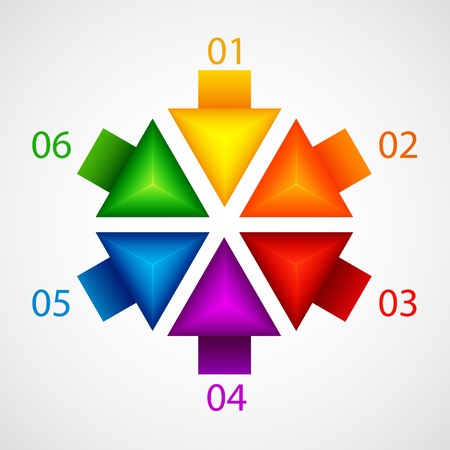Introduction to Aura Colours: An Overview
In the realm of metaphysical beliefs, the concept of aura colours has captured the imagination of many cultures, including that of Britain. An aura is commonly understood as a subtle, luminous energy field believed to surround living beings, reflecting their emotional, spiritual, and even physical states. Each colour within this field is thought to hold distinct meanings—blue may signify calmness or wisdom, while red can indicate vitality or passion. Although these interpretations are not universally agreed upon, they provide a framework for individuals seeking to understand themselves and others beyond the tangible. By establishing these foundational ideas about aura colours and their perceived significance, we create a baseline for comparing how various societies, including contemporary Britain, interpret and integrate these concepts into daily life. This introductory exploration sets the stage for a deeper cross-cultural analysis, highlighting both commonalities and distinctive features in how aura colours are perceived around the world.
2. Historical and Cultural Interpretations of Auras in Britain
The British perspective on auras is deeply rooted in a tapestry of historical, spiritual, and folkloric traditions. Understanding how the concept of auras has evolved in Britain requires a systematic exploration of key influences that shaped beliefs about unseen energies and the colours associated with them.
Early Spiritual Traditions and Folklore
Britain’s pre-Christian societies, including the Celts and Druids, believed in spiritual energies permeating people and nature. These early Britons often interpreted shimmering lights or coloured glows around individuals as signs from otherworldly realms. Medieval British folklore also frequently referenced “faerie lights” or “will-o’-the-wisps,” regarded as mystical phenomena indicating spiritual presence or warning.
Spiritualism and Victorian Influence
The Victorian era was pivotal in shaping modern British attitudes towards auras. The rise of Spiritualism—particularly popular from the mid-19th century—brought concepts like spirit energy and aura photography into public discourse. British Spiritualists organised séances and developed theories linking aura colours to moral character and emotional state, often drawing on both scientific curiosity and traditional superstition.
Systematic Overview: Key Influences on British Aura Beliefs
| Period | Key Characteristics | Cultural Impact |
|---|---|---|
| Pre-Christian (Celtic/Druidic) | Belief in natural energies, spiritual symbolism of colours | Rituals, oral traditions, nature reverence |
| Medieval Folklore | Faerie lights, mystical glows, supernatural warnings | Legends, cautionary tales, local superstitions |
| Victorian Spiritualism | Aura photography, séance culture, moral interpretations of colour | Public demonstrations, literature, scientific inquiry |
| Modern Esoteric Movements | Synthesis of old beliefs with Eastern philosophies (e.g., chakras) | Workshops, alternative healing practices, books |
The Blending of Science and Mysticism
Throughout British history, there has been an ongoing interplay between empirical investigation and mystical interpretation regarding auras. While mainstream science often regarded auras with scepticism, fringe groups—including Theosophists and New Age practitioners—continued to explore the significance of aura colours using both ancient lore and contemporary terminology.
Cultural Continuity and Modern Resonance
This blend of old-world mystique with modern reinterpretation makes the British approach to aura colours unique. Even today, references to “seeing someone’s true colours” or describing an individual as having a “bright presence” reflect echoes of these historical beliefs embedded within everyday language. This continuity underscores how the British view on aura colours is not static but evolves by weaving together past insights with present-day understandings.

3. Contrasting Eastern and British Perspectives on Aura Colours
A Systematic Comparison of Interpretative Frameworks
Philosophical Foundations
Eastern cultures, particularly those influenced by Hinduism, Buddhism, and Taoism, often view aura colours through a spiritual or metaphysical lens. The chakra system is central, with each colour corresponding to an energy centre and specific emotional or spiritual states. In contrast, British interpretations have historically leaned towards a blend of Christian mysticism and modern New Age spirituality. While there is growing interest in chakras within the UK, many still interpret aura colours as reflections of personality traits or emotional health rather than strictly spiritual phenomena.
Cultural Symbolism and Colour Associations
The symbolism attached to specific colours can differ notably between East and West. For example, red in many Eastern traditions signifies vitality and life force but can also represent auspiciousness or good fortune. In British contexts, red may be more readily associated with passion, aggression, or love, shaped by local cultural references such as national symbols (e.g., the red of the Union Jack) and historical narratives.
Methods of Aura Perception
Eastern practices often involve meditation, breathwork, or guided visualisation to sense or see auras. Techniques are usually passed down through disciplined practice within spiritual lineages. Meanwhile, in Britain, approaches tend to be more eclectic—ranging from psychic readings at spiritualist churches to self-guided exercises found in books or workshops. This reflects a broader British tendency towards individualism and pragmatic experimentation when engaging with esoteric subjects.
Points of Convergence
Despite these differences, both Eastern and British perspectives share the belief that aura colours provide valuable insight into one’s inner world. There is mutual recognition of the aura as an indicator of well-being or imbalance, although the language and conceptual frameworks may vary. Increasing global connectivity has also led to some blending of ideas, with British practitioners incorporating Eastern terminology and techniques into their practices.
4. Contemporary British Attitudes Towards Aura Colours
In the present-day United Kingdom, attitudes towards aura colours are shaped by a blend of historical scepticism, growing multicultural influences, and the rise of New Age spirituality. While the concept of auras has roots in various global traditions, British perspectives often reflect a distinct interplay between rational inquiry and open-minded exploration.
Beliefs and Acceptance
Although mainstream British society has traditionally regarded aura reading with scepticism, recent years have seen an increasing openness to alternative spiritual practices. This shift is partly influenced by the UKs multicultural landscape and the global popularity of holistic wellness trends. Many Britons now explore aura reading as part of broader interests in mindfulness, yoga, and energy healing, albeit often with a degree of cautious curiosity rather than outright belief.
| Demographic | General Attitude | Common Practices |
|---|---|---|
| Younger Adults (18-35) | Open-minded, experimental | Aura photography, meditation workshops |
| Middle-aged (36-60) | Sceptical but curious | Mindfulness classes, occasional readings |
| Older Adults (60+) | Mainly sceptical | Limited engagement |
Scepticism and Rationalism
The British tendency towards empiricism means that aura colours are frequently met with a healthy dose of doubt. Scientific scrutiny remains strong, especially among older generations and within academic circles. Nevertheless, some practitioners attempt to legitimise their work by referencing psychological concepts such as colour psychology or energy fields—though these claims are rarely accepted by the scientific mainstream.
Sceptics’ Main Concerns:
- Lack of empirical evidence for auras or their colours
- Association with pseudoscience or fringe beliefs
- The potential for exploitation through commercialised readings
Emerging Trends in Aura Colour Interpretation
Modern interpretations of aura colours in the UK increasingly emphasise personal growth and wellbeing over mystical explanations. There is a notable trend towards integrating aura readings into holistic health practices, focusing on stress reduction and emotional awareness. Additionally, digital tools—such as mobile apps and virtual workshops—are making aura-related content more accessible to tech-savvy Britons.
Summary Table: Key Trends in Contemporary Britain
| Trend | Description |
|---|---|
| Holistic Integration | Aura reading combined with yoga and meditation for overall wellbeing. |
| Digital Accessibility | Use of online platforms for virtual readings and education. |
| Cultural Syncretism | Merging traditional British scepticism with global spiritual practices. |
| Youth Engagement | Younger people driving interest via social media and experiential events. |
This contemporary British approach to aura colours exemplifies a unique balance between rational analysis and open exploration, reflecting both the nations critical mindset and its growing receptivity to diverse cultural ideas.
5. The Influence of Popular Culture and Media
Popular culture in Britain has significantly contributed to the public’s perception and interpretation of aura colours. British literature, both classic and contemporary, often weaves mystical or supernatural elements into its narratives. Authors like J.K. Rowling have introduced broader audiences to magical concepts, including auras, through widely read works such as the Harry Potter series. These literary references subtly shape readers’ assumptions about what aura colours signify, associating certain hues with personality traits or emotional states.
The Role of Television
British television plays an equally influential role. Programmes ranging from documentaries on alternative spirituality to dramas featuring psychic characters frequently reference auras and their colours. For example, reality TV shows and investigative series occasionally explore paranormal themes, presenting aura reading as both entertainment and a topic for sceptical inquiry. This media exposure both normalises and questions the legitimacy of aura colour interpretations within mainstream British society.
Social Media’s Growing Impact
With the rise of social media platforms, conversations about aura colours have become even more accessible and widespread in the UK. Influencers, wellness coaches, and everyday users share personal stories and images related to aura readings, often using hashtags to build online communities. These digital spaces allow for rapid exchange of ideas while reflecting a blend of traditional British scepticism and open-minded curiosity toward cross-cultural spiritual practices.
Integration with British Identity
Together, literature, television, and social media contribute to a uniquely British understanding of aura colours—one that balances historical reserve with contemporary openness. Through these channels, the concept of auras is continuously reinterpreted to fit local values, cultural humour, and the nation’s ongoing dialogue about belief versus evidence.
6. Integrating Diverse Perspectives: The British Response
In evaluating how British society engages with global interpretations of aura colours, it is crucial to adopt a reasoned and systematic approach. British responses to cross-cultural ideas about aura colours are shaped by several intersecting factors, including the nation’s historical scepticism, multicultural landscape, and enduring pragmatism.
The Role of Scepticism and Critical Inquiry
The British have long been associated with a tradition of critical inquiry, often approaching metaphysical concepts such as aura colours with a healthy dose of scepticism. While spiritualism has historical roots in the UK, contemporary society tends to prioritise scientific rationality. This means that while some individuals may be open to exploring global interpretations—such as those from South Asian, Eastern European, or Indigenous traditions—there is an overarching tendency to demand empirical evidence or logical explanation before integrating such beliefs into mainstream thought.
Adapting Through Multiculturalism
Britain’s increasingly multicultural fabric provides fertile ground for exposure to diverse perspectives on aura colours. Migrants and diaspora communities bring their own understandings of aura symbolism, which sometimes blend with or challenge established British interpretations. For example, while traditional British views may associate blue with calmness and reliability, South Asian perspectives might emphasise its spiritual significance. In cosmopolitan cities like London, workshops and holistic fairs frequently feature international speakers and practitioners who introduce alternative frameworks, leading to a subtle cross-pollination of ideas.
Negotiating Resistance and Acceptance
Despite this exposure, there is an underlying current of resistance among certain segments of the population. This resistance is not merely rooted in scepticism but also in concerns over cultural appropriation or dilution of local identity. However, younger generations often display greater openness, seeking personal meaning in global interpretations rather than strict adherence to traditional British views.
The Future Outlook
Ultimately, the British response to global interpretations of aura colours can be characterised as a dynamic negotiation between adaptation and resistance. There is no monolithic stance; instead, British society selectively integrates external ideas through processes of rational evaluation, cultural exchange, and individual exploration. This measured engagement ensures that while international influences are acknowledged, they are refracted through a distinctly British lens—one that values both critical thinking and cultural inclusivity.


